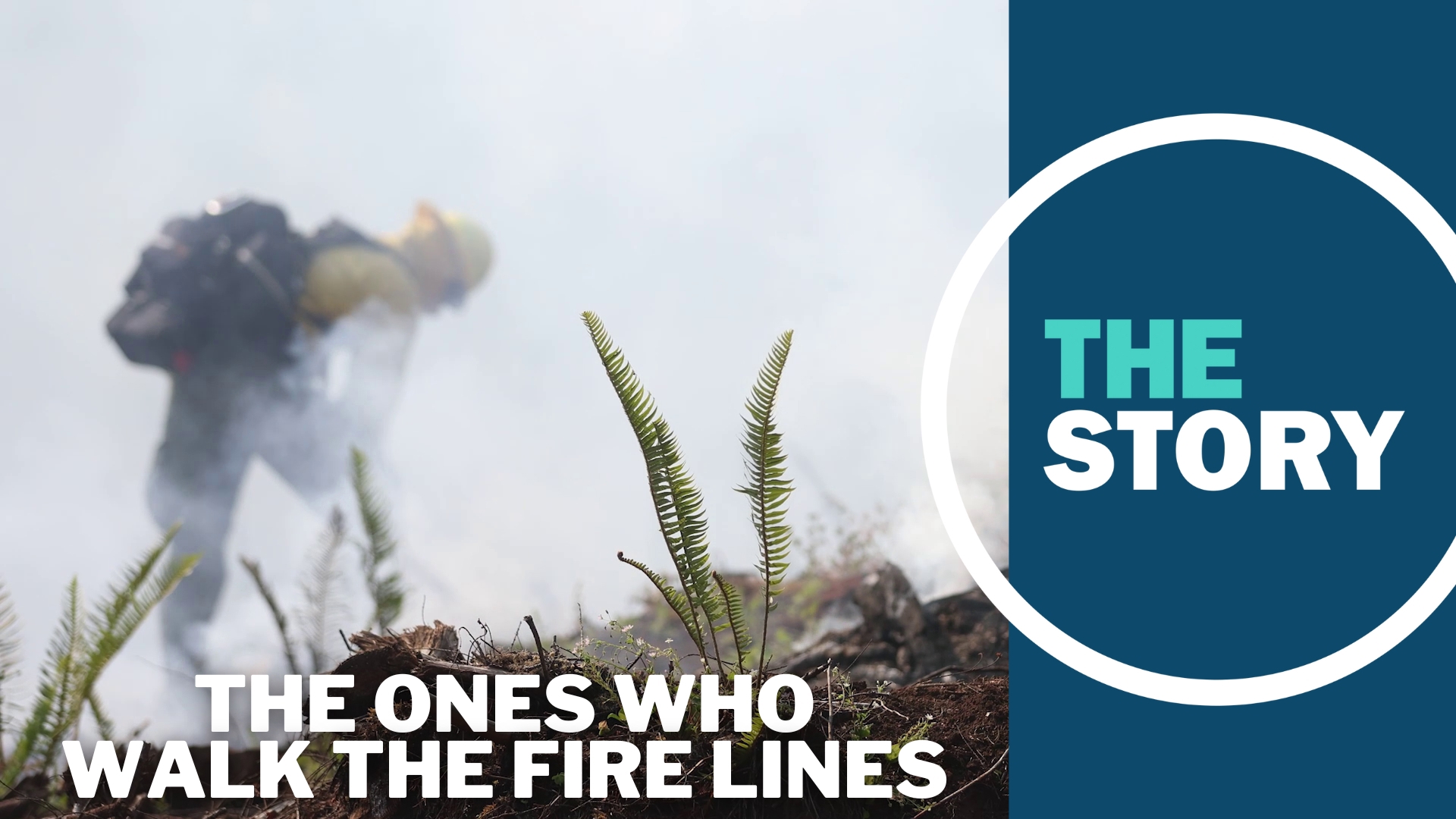SWEET HOME, Ore. — Oregon has officially wrapped up a historic year for wildfires. It was the most damaging in terms of acres burned and the most expensive fire season in state history — and incredibly taxing on both the resources and the people who fought it.
Essential to firefighting efforts each summer are the wildland firefighter crews, many of them young people who join the fire lines seasonally. During the last week of June, a group of 170 men and women gathered in Sweet Home, Ore., to learn or refine their skills at the Mid-Willamette Valley Interagency Wildland Fire School.
The trainees didn't know at the time that they'd be preparing for one of the biggest fire seasons in living memory. But Craig Pettinger, ODF's incident commander for the fire school, had a sense it would be a busy year.
"I'd say they have a good chance of seeing fire this summer," Pettinger said of his students.
The wildland firefighter students' yellow flame-resistant shirts were still bright and clean in June, but that would change soon enough.
For some of the students, firefighting is a family tradition. Brian Dally of Springfield studies welding in college, but during the summer, he heads to the outdoors.
"My mom, my dad and my sisters both, they've all fought fire — been a part of the fire scene," Dally said. "I grew up around it ... There's always been in the back of my head, that calling to natural resources."
Erik Ryan was back for a second year — he worked last summer with a crew near the town of Sisters.

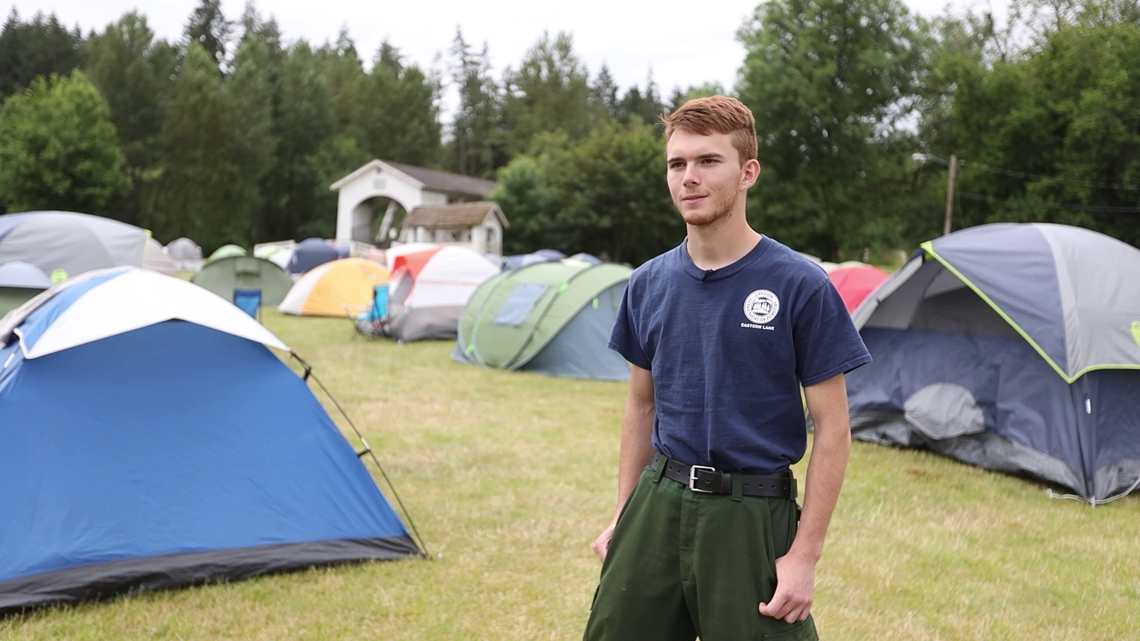
And McKenna Armantrout was a veteran by this point, marking her fifth season. She grew up in Klamath Falls and now studies environmental science in college during the winter months and fights fire during the summer.
"Probably since high school, I knew I wanted to do something that had to do with natural resources or forestry, anything outdoors," Armantrout said. "I loved being outside, and I took a biology class in high school that kinda sparked that fire for me."
Wildland firefighting isn't an easy job, but it's open to anyone, including those looking for something new. Nicole Howard now works for the U.S. Forest Service, but she was doing something else entirely not long ago.
"It's actually a career change for me ... the last couple years, I was a geologist at an engineering company," Howard said.
For newcomers and veterans alike, this training camp was either an opportunity to learn or remember that wildland firefighting can include difficult and tedious physical labor. With picks, shovels and axes, the trainees scraped the ground of anything that would burn, leaving only bare dirt.
Jessie Ebert is an office manager at ODF, but she came to the camp to learn how to operate out in the field.
"I personally haven't had any experience on the line yet, but tomorrow will be the first day to get that live fire situation, and I'm excited to eventually be moving out with our crew," Ebert said.

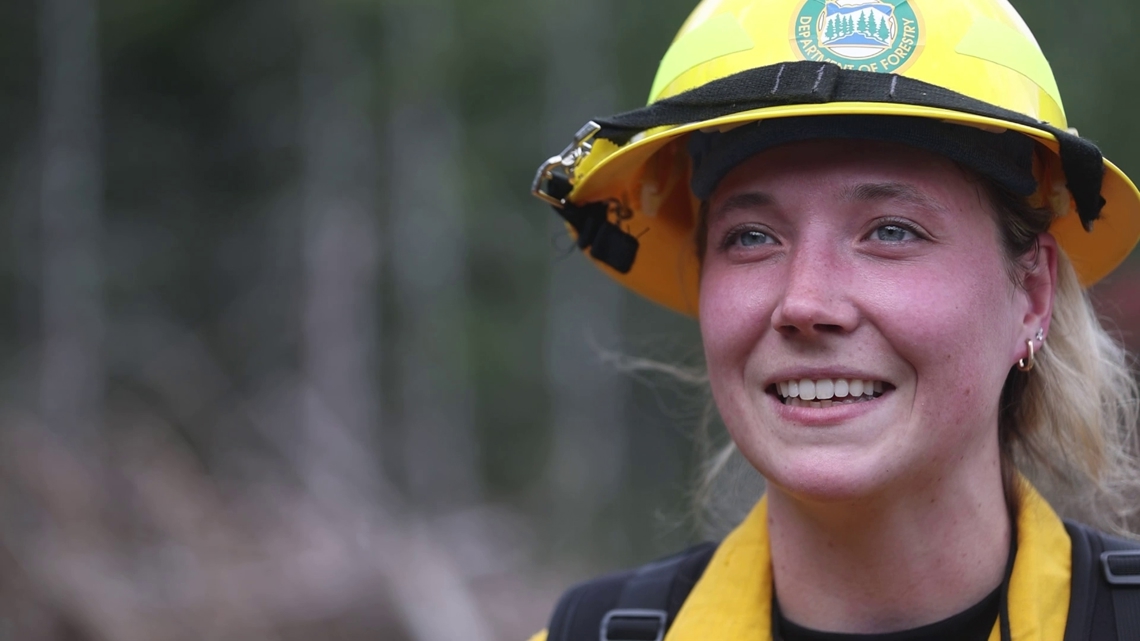
Playing with fire
The fire crews in training then headed off into the forest, where large slash piles — stumps, roots and branches gathered as the land here was cleared — were set on fire for them. They would practice pulling hoses to the piles and clearing the earth to make lines around the burning piles.
At times, the smoke seemed to be everywhere. For the excited trainees arriving by bus, it also proved a signal that they were getting close.
"Well, when we were coming up on our way here, you could slowly start to smell more of the smoke, you know," Dally said. "Then got off, watching all this burning up, you know, got excited. Ready to go."

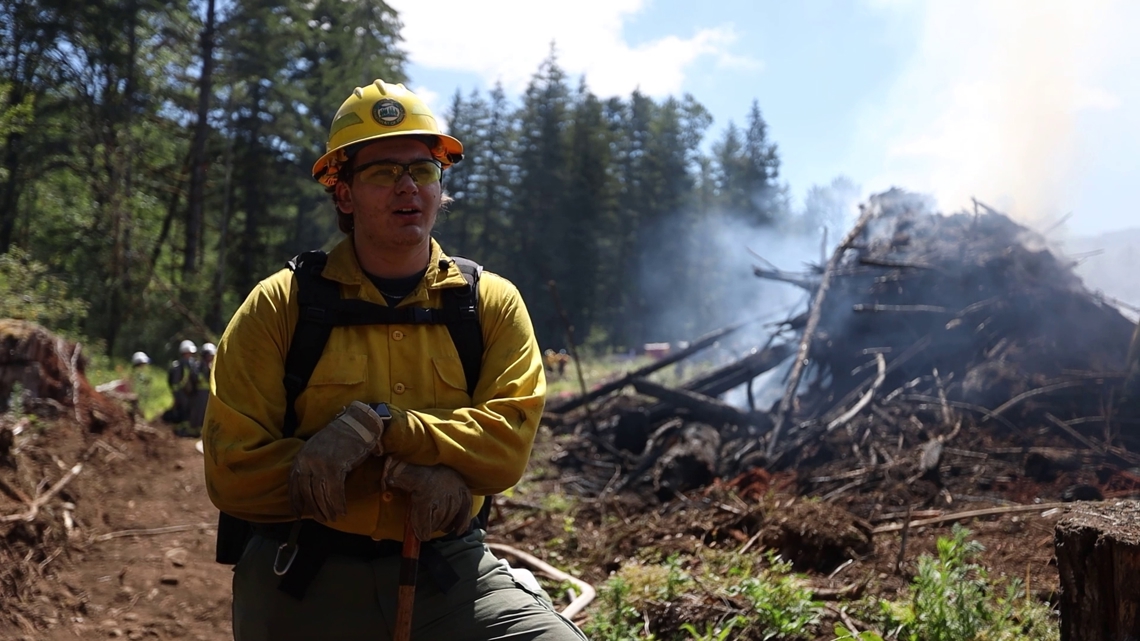
Some of the firefighters pulled scarves over their mouths and noses against the smoke. Others decided to just endure. The flames themselves were not spectacular, but that's also a dose of realism. On "real" wildfires, crews rarely get close to raging flames if it can be helped. Much of the work happens around smoldering wood, or well ahead of the fire to contain its advance.
Armantrout knows well what to do on the fire line, so she was there to learn a new skill this year: being a public information officer.
"If this was a real fire, I would probably be telling you that we have crews working on it ... At this point, we have the fire completely lined, and we have hose lays implemented around the fire," she said.

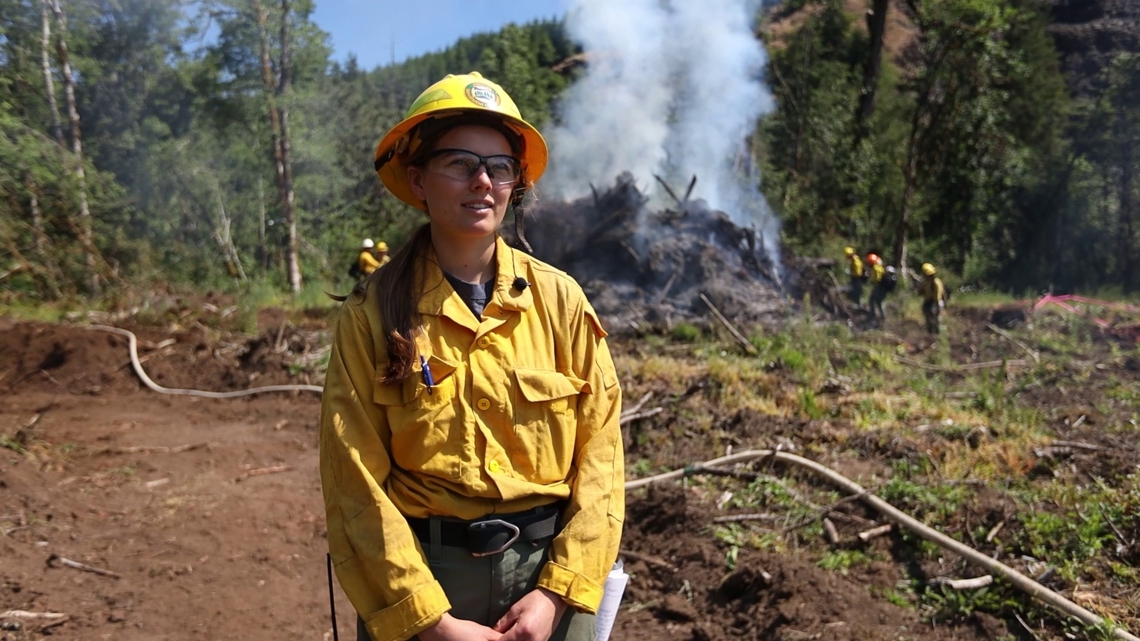
In the thick of it
Months later, as Oregon's 2024 fire season raged, The Story caught up with McKenna Armantrout as she worked fires near the town of Long Creek in northeastern Oregon. This time, she was using her skills to build maps of the fire, and her frontline experience came in handy.
"I think it helps a little bit just with understanding, you know, the types of line that they're putting out there, different areas, looking at imagery, and kind of thinking along the lines of ... how would this actually look on the ground?" Armantrout said. "Folks will come in and tell us like, 'So the fire goes to this line' ... so, just knowing the lingo, knowing some of the types of lines and points that might be put on a map and knowing what that means out in the field, I think, is definitely helpful."
Jessie Ebert ended up on the Battle Mountain Complex, which burned some 183,000 acres, also in northeastern Oregon. She worked to make sure people were keeping up the development of their skills when they were not on the fire lines, so they could advance to another job within this fire team or the next one.
"I think my favorite part about this particular position is I love people so much, and so, learning about what makes them tick and what their goals are to accomplish, while also being able to help, you know, work on a fire and make sure that we are protecting those people, property and resources is ... it's a really special thing, and it just makes me smile," Ebert said. "So I feel very lucky to be in this particular role, but we also take it very seriously and know that this is not a fun time for folks, and we want to make sure that we're respecting that as well and providing that comfort to communities."
Throughout the 2024 fire season in Oregon, as many as 12,000 men and women fought wildfires, striving to keep the flames away from Oregonians and their homes.

